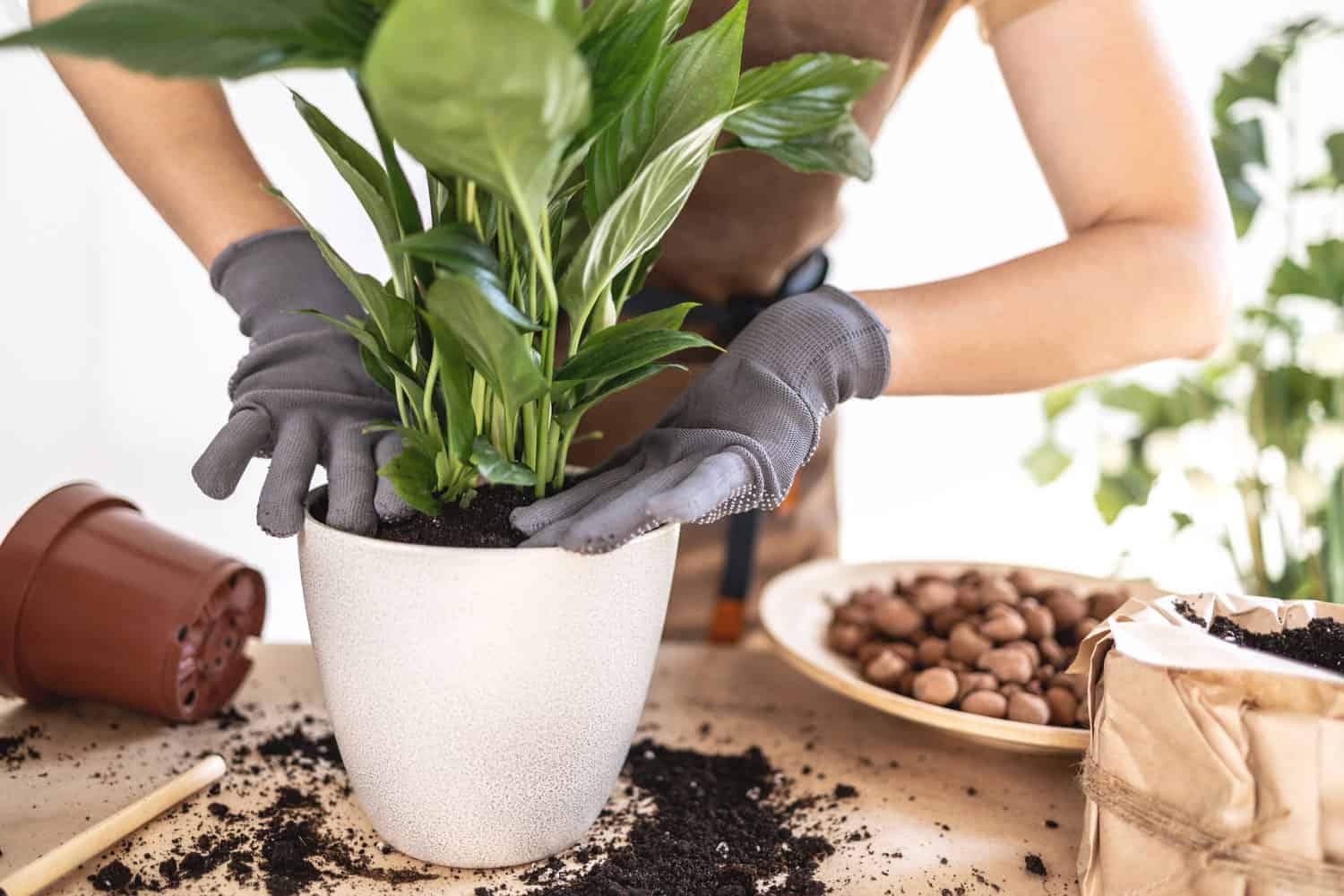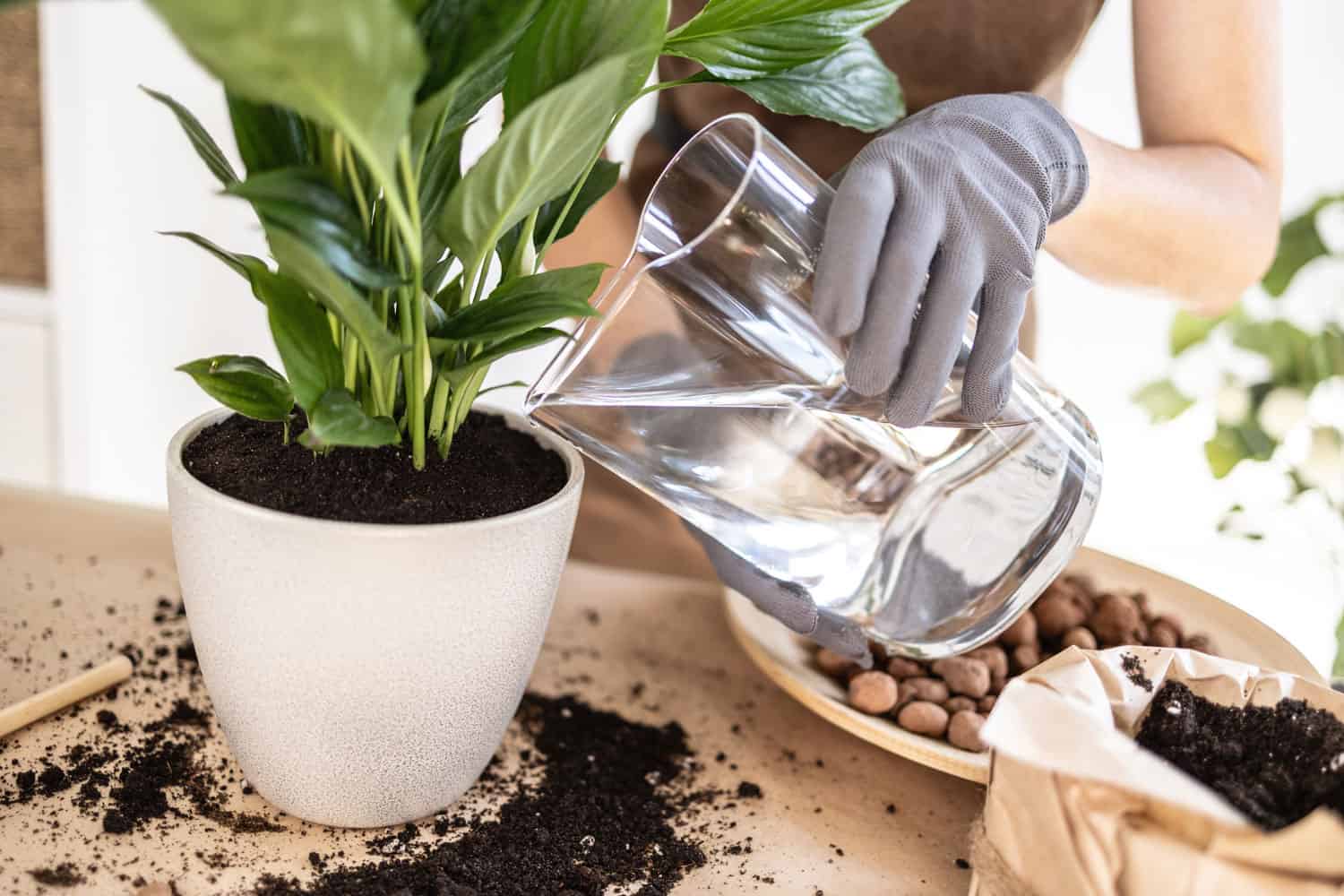Knowing when to move your peace lily to a new pot is a big part of keeping it happy and healthy.
Peace lilies are pretty laid back when it comes to taking care of them, and they even help clean the air in your home.

But after a while, they can run out of space to grow or use up all the good stuff in their soil.
If you get the timing right for giving them a new home, your peace lily will keep looking great and growing strong.
Overview: Understanding the Peace Lily's Need for Repotting
Understanding the root growth of your Peace Lily is key to its care. The plant's roots signal its overall health and tell you when it's time for a new pot.
As the Peace Lily grows, its root system becomes denser to support new leaves and flowers. But a pot can only hold so much.

If you see roots peeking out of the drainage hole or over the pot's edge, the plant needs more space.
Crowded roots struggle to get enough nutrients and water. This stress can turn leaves yellow and cause water to run straight through the pot, showing no room left for the roots to expand.
Repotting gives the plant fresh soil and the space to grow. You should generally repot every few years, depending on how fast your plant grows.
When you repot, choosing the right pot size is critical. A pot that's too big can drown the roots, while a small one will lead to crowding again.
Best Time to Repot a Peace Lily
Repotting a Peace Lily is a vital aspect of its care routine, ensuring the plant remains healthy and vibrant.
The timing of repotting can significantly affect the plant's ability to recover and thrive. Here are the ideal seasons for repotting your Peace Lily:
Between Late Winter and Early Spring
As peace lilies start showing signs of growth during late winter or early spring, repot them to support their renewed vigor.
During this transition, temperatures are beginning to rise from the winter lows, moving towards the more moderate ranges that Peace Lilies favor.
This period marks the end of their dormant phase, making it an ideal time to provide them with fresh soil and a slightly larger pot.
As spring approaches, these temperatures will naturally increase, providing an ideal climate that supports the Peace Lily during its post-repotting recovery.
Spring
Spring's mild climate is ideal for the Peace Lily's flourishing, which is why it's the best season for repotting.
The average spring temperatures in the U.S. range widely depending on the region.
However, many areas experience conditions that align well with the Peace Lily's preferred temperature range of 65°F to 75°F during the day and slightly cooler at night.
The national averages for spring are around 53°F (12°C) in March, 64°F (18°C) in April, and 71°F (22°C) in May.
These temperatures are within the comfortable range for Peace Lilies, which prefer to stay warm but not hot.
Early Summer
Early summer is still a suitable time to repot a peace lily, especially if you missed the opportunity during late winter or spring.
However, it's important to complete the repotting process well before the scorching heat of mid-summer, as high temperatures can stress the plant and reduce its ability to recover.
Beyond Seasons: Signs Your Peace Lily Needs Repotting
As a caring plant owner, you should always be on the lookout for signs that your peace lily is in need of repotting.
While the season can be a huge factor, you still need to watch these several indicators that could tell you your peace lily is ready for a bigger home.
- Roots are crowded: If you see roots poking out of the pot's drainage holes or circling the surface, it's time for a bigger pot.
- Slow growth: A noticeable slowdown in new leaves or flowers can mean your Peace Lily is root-bound.
- Watering issues: When water runs straight through the pot without soaking in, it could indicate the soil is too compacted, or the roots have taken up too much space.
- Visible decline: If the plant looks less vibrant despite proper care, it might need fresh soil and more room to regain its health.
Did you notice any symptoms of decline with your Peace Lily? Find out how you can save your plant by reading this post.
Reducing The Risk of Transplant Shock
One crucial aspect to consider when repotting your Peace Lily is minimizing the risk of transplant shock.
This type of stress occurs when the plant is moved to a new environment and can cause wilting, leaf loss, and even death in severe cases.
To reduce the risk of transplant shock:
- Pre-Repot Hydration: Water your plant a few hours before you repot to make sure it's fully hydrated. This helps it handle the move better.
- Proper Drainage: Your new pot should let water out through holes at the bottom. This stops water from sitting at the roots too much.
- Gentle Root Handling: Ease your Peace Lily out of its old pot and into the new one with care to avoid damaging the roots.
- Get the Soil Right: For your potting mix, blend peat moss or coco coir with perlite or vermiculite for balanced moisture retention and improved drainage.
- Maintain Soil Level: Keep the soil level consistent with what your plant is used to. Too high or too low can stress it out.
- Post-Repot Watering: Give it a thorough watering once it's in its new pot to settle the soil and eliminate air gaps.
- Post-Repot Care: Put your plant back in a spot with indirect sunlight and keep up with its regular care routine, avoiding extreme temperatures or direct sun.
Want to know whether cutting dead leaves is good routine care for your Peace LiLies? Find out here!
How Often to Repot Peace Lilies?
Repotting your peace lily is an essential part of its care routine. Generally, peace lilies should be repotted every 1-2 years, depending on their growth rate.
However, there are circumstances where you might need to repot sooner. For example, if the plant is severely root-bound, it's best to repot it as soon as possible.
Final Thoughts: Timing the Transition for Thriving Peace Lilies
Successfully repotting your Peace Lily is about more than just a schedule; it's about observing and responding to your plant's needs.
By repotting at the right time—ideally, during late winter, spring, or early summer—you promote healthy growth and vitality in your Peace Lily.
Always look out for signs like crowded roots or stunted growth, which signal it's time for a change.
With careful attention to watering, soil, and gentle handling, you can mitigate transplant shock and help your Peace Lily thrive in its new pot.
